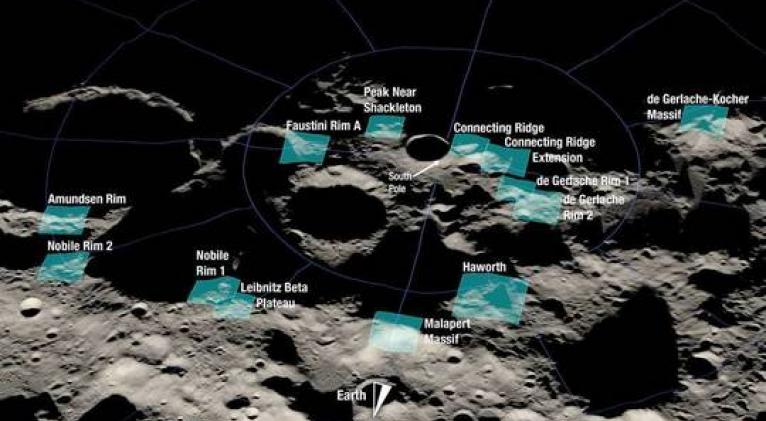NASA selects potential Moon landing sites
especiales

NASA has identified 13 possible landing sites on the Moon as the space agency gears up for its Artemis mission, which aims to put US astronauts back on the Earth’s satellite by 2025.
The zones are located near the lunar South Pole, according to the agency’s statement released on Friday.
“Selecting these regions means we are one giant leap closer to returning humans to the Moon for the first time since Apollo,” said Mark Kirasich, deputy associate administrator for the Artemis Campaign Development Division, referring to the agency’s 1972 mission, which marked the last time humans set foot on the Moon.
Kirasich noted that when NASA lands on the Moon as part of Artemis program, “it will be unlike any mission that’s come before” because astronauts would find themselves in the dark and previously unexplored areas and would “lay the groundwork for future long-term stays.”
NASA wants nuclear reactors on the Moon
The potential landing locations, each approximately 15 by 15 kilometers, are situated within six degrees of latitude of the lunar South Pole and contain diverse geologic features. According to Jacob Bleacher, chief exploration scientist at NASA Headquarters, each region has at least 10 potential landing sites.
According to NASA, when selecting these zones, scientists and engineers relied on troves of data collected by the Lunar Reconnaissance Orbiter, the agency’s unmanned spacecraft that is now circling the Moon, as well as decades of other lunar science findings. The regions were identified with many aspects taken into consideration, including launch window availability, chances for a safe landing, terrain slope, ease of communication with Earth, and lighting conditions.
All 13 sites provide continuous access to sunlight throughout a 6.5-day period, the planned stay of the Artemis III surface mission, the agency said. It added that sunlight is critical for a long-term stay on the Moon, as it serves as a power source and minimizes temperature fluctuations.
For a manned flight to the Moon, NASA is set to use the SpaceX Starship system, which is scheduled to conduct its first orbital mission later this year.














Add new comment